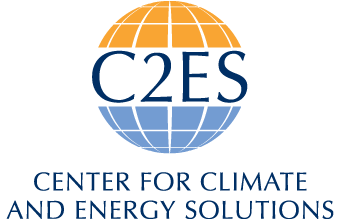
Press Contact
Tim Carroll, press@c2es.org
For Immediate Release
July 1, 2025
Updated Model Outlines Job Losses, Economic Risk in Latest Senate Reconciliation Bill
New Analysis: 2.3 Million Jobs & $419 Billion at Stake While Electricity Costs Rise
WASHINGTON—Today, in partnership with the Center for Climate and Energy Solutions (C2ES), Greenline Insights released new analysis on the Senate’s latest proposed changes to clean energy tax credits, outlining severe economic risks, job losses and rising electricity costs as demand grows across the nation.
The analysis specifically modeled the costs associated with the removal of tech-neutral tax credits for solar and wind energy based on a “placed-in-service” requirement and a new excise tax on all solar and wind projects that exceed thresholds for components used from foreign entities of concern. Together, these proposals raise barriers to deployment and undercut the long-term effectiveness of clean energy incentives.
If enacted as currently proposed, these changes would result in steeper GDP and job loss over the next ten years:
- U.S. Jobs Lost: 2.3 million
- U.S. Wages Lost: $277 billion
- U.S. GDP Lost: $419 billion
Further, the new proposal would raise electricity prices across the nation due to the loss of new capacity. In 2035 alone, the proposal would result in:
- Electricity Price Increase: 5.0%
- Utility-Scale Solar Capacity Lost: 116 GW
- Land-Based Wind Capacity Lost: 223 GW
The current technology neutral clean electricity tax credits will spur investments across the country in innovative and growing clean energy technologies, including advanced nuclear deployment, geothermal expansion, battery production for grid storage, as well as continued growth in wind and solar, which are best positioned to meet near-term demand while keeping prices low.
These credits are critical to investment and job creation—projected to catalyze $500 billion in investment by 2030. Restrictions limiting their use proposed by the Senate could instead throttle that economic opportunity as demonstrated by this new analysis, slowing the addition of power capacity right as demand accelerates.
This analysis stacks the impacts of the tech-neutral credit repeal with the excise tax analysis. The excise tax component draws on a previously developed foreign entity of concern (FEOC) model, which estimates, for each year through 2035, the share of solar and wind project costs that exceed proposed thresholds. These shares are used to determine cost increases from the tax. The Energy Policy Simulator is then used to estimate how higher project costs influence clean energy deployment and system-wide outcomes.
While these impacts are devastating on their own, this modeling does not reflect the potential complexity or administrative burden of complying with the Senate bill’s FEOC provisions. In many cases, developers may be required to demonstrate supply chain relationships or ownership structures that are difficult to verify—especially for grid-firming technologies, where domestic content guidance remains limited.
To speak with a C2ES expert, contact Tim Carroll at press@c2es.org.
###
